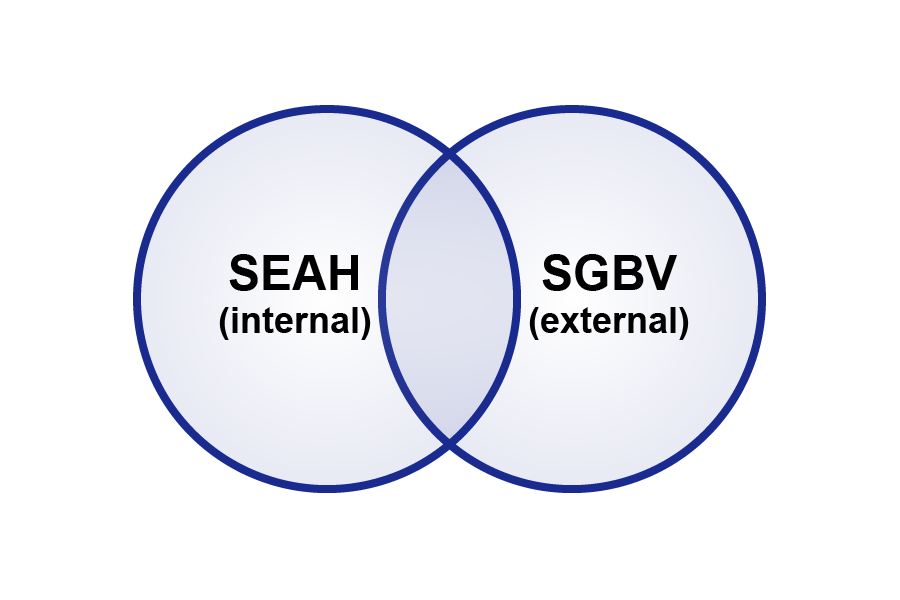Unit 4: Report and respond
4.1 What is the difference between SEAH and SGBV?
Are you clear about the different terminology?

Sexual Exploitation, Abuse and Harassment (known as SEAH) is sexual misconduct committed by staff in your organisation and associated personnel (i.e., volunteers, board members, partners, advisors, etc.) against others (such as fellow staff, associated personnel, volunteers, beneficiaries and communities).
Sexual exploitation, abuse and harassment is known as SEAH. Protecting people from SEAH is an organisational duty of care to staff and associated personnel inside an organisation through policies, procedures and practices based on international safeguarding standards, donor requirements and national laws. It is not a ‘programme’ in the strict sense of the word, even though it does require resources, personnel and leadership commitment.
Sexual and Gender-based violence (SGBV) is harm perpetrated by individuals external to the organisation. Obviously, there can be a cross-over as shown in the diagram above. However, the concerns when reported may be dealt with differently as it depends on the context.
SEAH and SGBV concerns all come under the wider umbrella of ‘safeguarding’, which is about protecting people from all forms of sexual harm, including men and women, boys and girls. However, the implementation of safeguarding measures may be affected by the gender roles that men and boys and women and girls are perceived to possess in the society in which we work, as well as the assumptions and biases (conscious and unconscious) that we may have as aid workers. Assigning gender roles to women and girls, men and boys may be barriers to reporting SEAH.
To learn more about SEAN and SGBV, follow the links below:
